Memories of Japan – Homemade Sake Set
For the past year, I’ve been taking wheel throwing classes at my local arts studio. It’s been fun to be able to go to class and practice pottery with others. I love exploring on my own but I also love how many new ideas come about when I’m with others pursuing a common goal. In this case, functional and creative pottery. I like to go into each class with a challenge and one day it was – a homemade sake set!
I’ve made new friends who push me to keep learning and trying hard things. We problem-solve together and share tools and books. It’s the greatest. I’m now at a crossroads of melding “in-class” and “at-home” pottery – how can I make it work in terms of functional space, time, and … cupboard space.
I want both – more freedom in my pottery creation and build my technical skills from instructors. I recently read that “pots tend to outlast the potter,“ so I’m also sorting through what I even want to create and for what purpose.
Wheel throwing does not come naturally to me. On one hand, its so frustrating that much of my stuff doesn’t turn out how I want them to but on the other, my wheel-thrown pottery seems to be my creative style “unfiltered”. What is “unfiltered” to me?
- off-centre (literally and figuratively)
- loose
- personal
- textured
This sake-set was inspired in part by the challenges in “The Great Pottery Throwdown” and a trip I took to Japan in 2017. I was reading The Japanese Pottery Handbook and felt inspired by the underglaze technique sometsuke or 染め付け which is blue and white decoration. I also narrowed down on my set shapes using this book and melding my “off-centre” vibes.
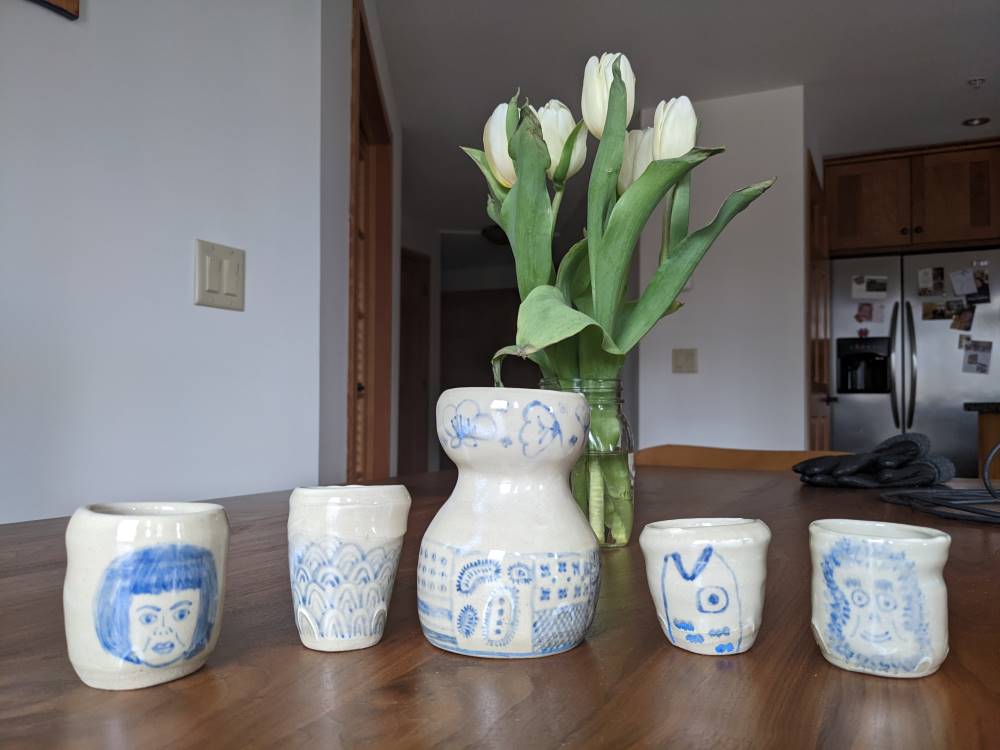
The whole process included a fair amount of research and preparation when I look back on it.
- Studying photos of Japanese ceramics I saw our on 2017 trip.
- Reading about techniques and shapes in pottery books.
- Drawing and drafting cup and carafe designs.
- Calculating sizes and how much liquid the carafe and cups should hold.
- Researching traditional Japanese decorative designs.
- Curating my own illustrations from photos and experiences and my love for Yayoi Kusama and her exhibit “My Eternal Soul” that I saw in Tokyo in 2017.
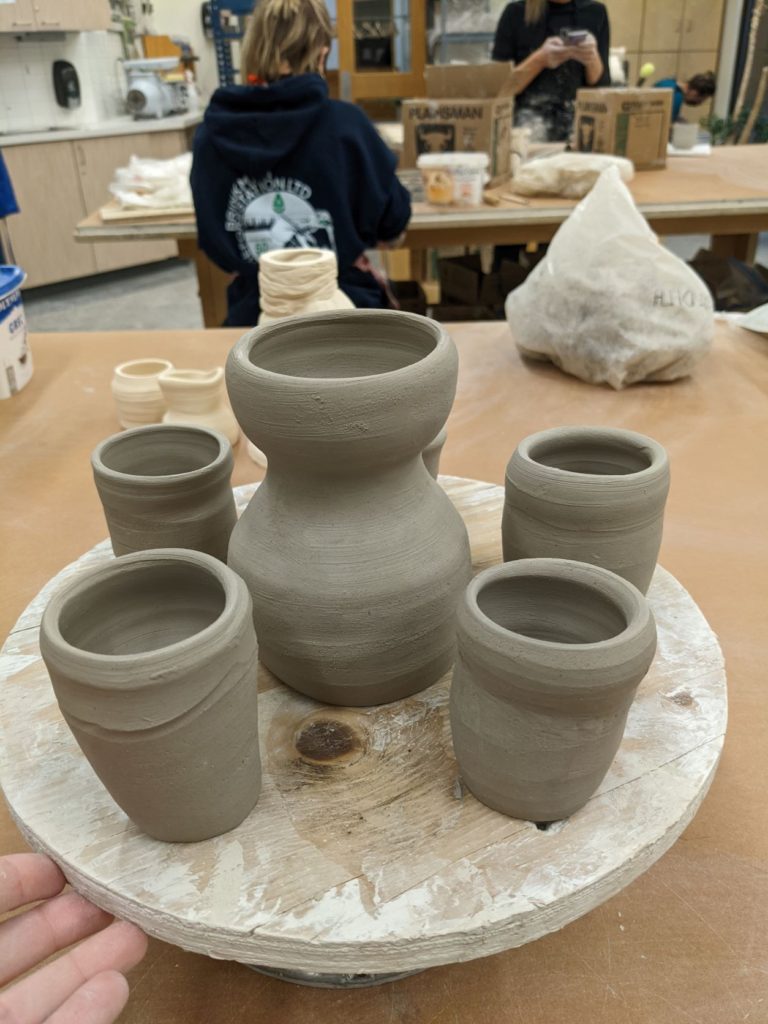
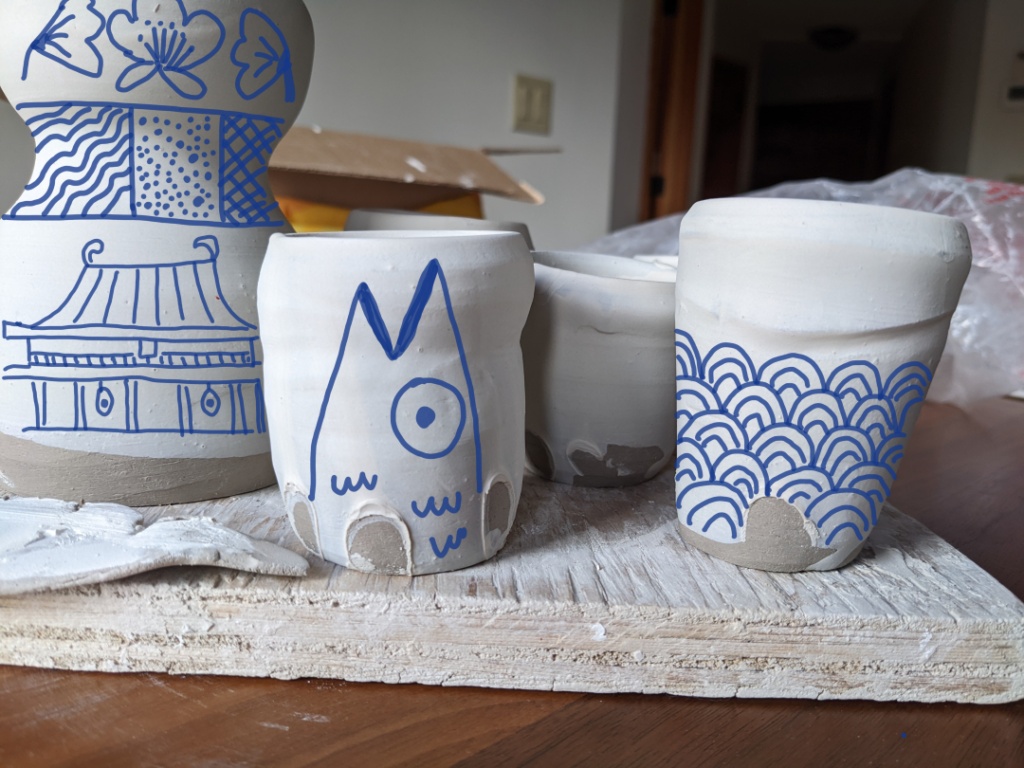
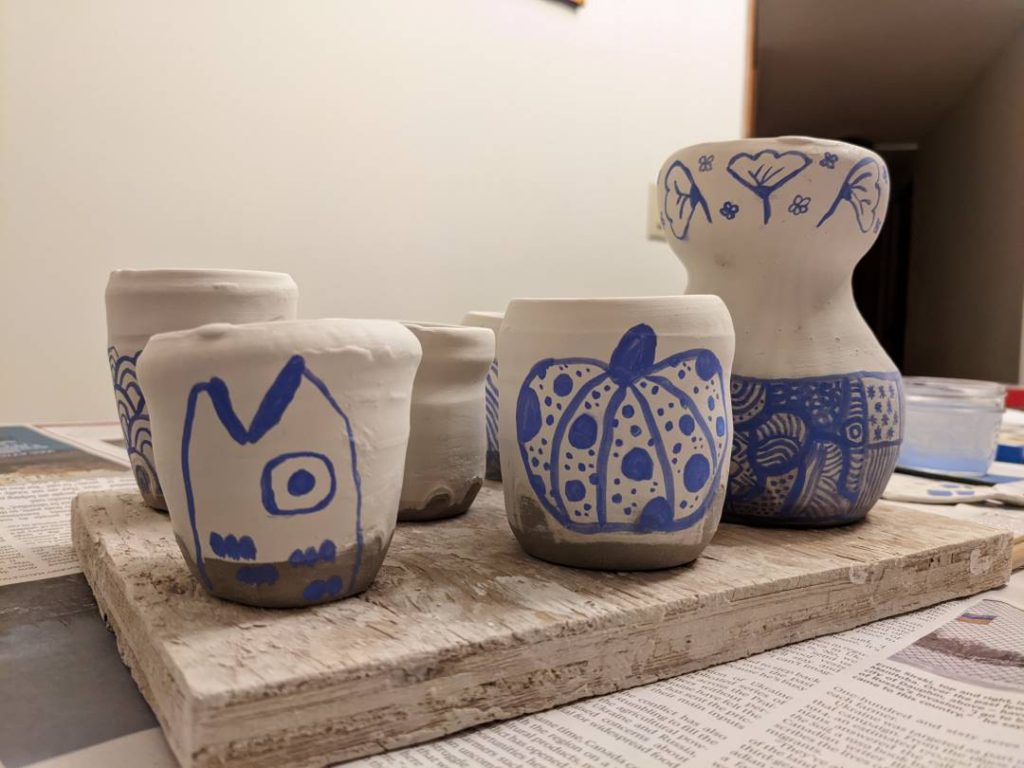
Lessons Learned
Shape & Function
The shape and rim of my carafe are not ideal for pouring, which defeats the purpose and function of the set. This is a let-down but an important lesson that the rim of the carafe subtly tilts outward rather than inward. The top cup also would be better if it held the amount intended for each sake cup (which would be about 45 mL). I do like the feel of the carafe in my hand!
I threw my sake cups “off the hump” and they had a lot of variation in size. I also trimmed some of them too thin and my fish cup had a hole in the bottom. I sadly didn’t notice this prior to testing it out and my friend noticed all her sake drip out of her cup, not once but twice, before we figured out there was a hole at the bottom. RIP fish cup.

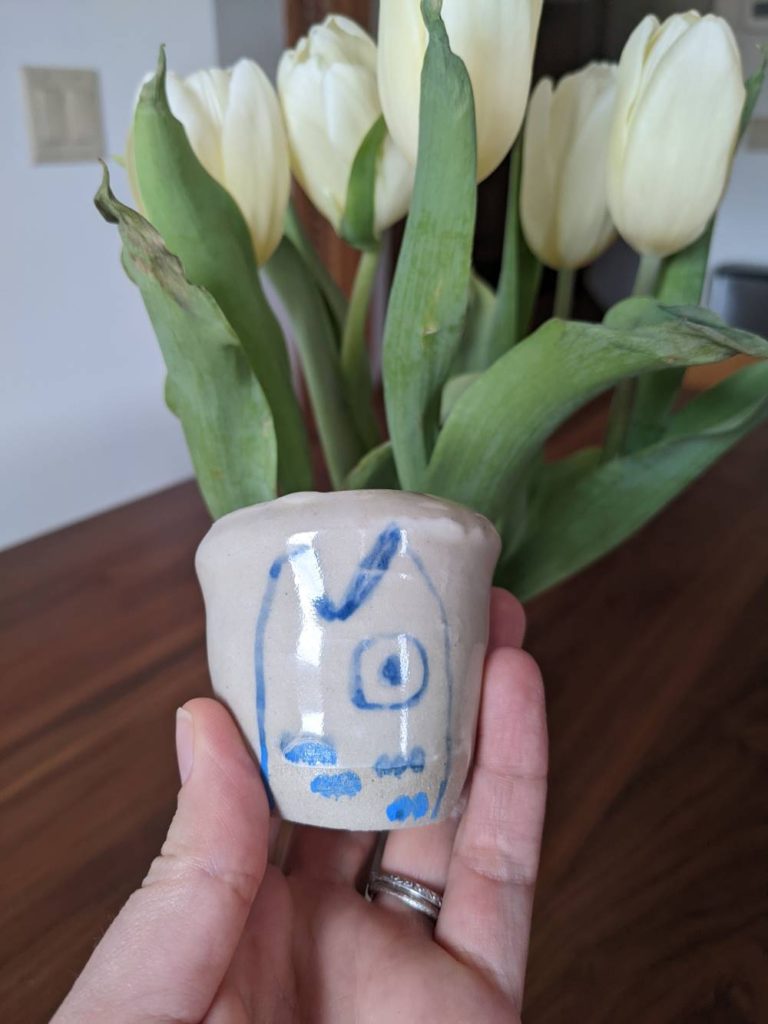
Firing
I also need throw bigger than I expect too account for kiln shrinkage. My carafe only holds 150 mL and the standard size is 180 mL (or restaurant size is 360 mL) according to The Japanese Pottery Handbook. I think this comes down to documenting my pottery size at each stage and calculating the shrinkage at the end. Of course, I don’t have any benchmarks from this project – dang!
Decoration
I don’t really like the transparent glaze over the underglaze as it makes the illustrations less sharp. It also seems like the transparent glaze I used has a hint of white in it that has left a bit of a iridescence on the pot in random spots. I’m considering throwing with a lighter coloured clay for this technique next time. However, I am really happy with my illustrations and the Amaco underglazes.
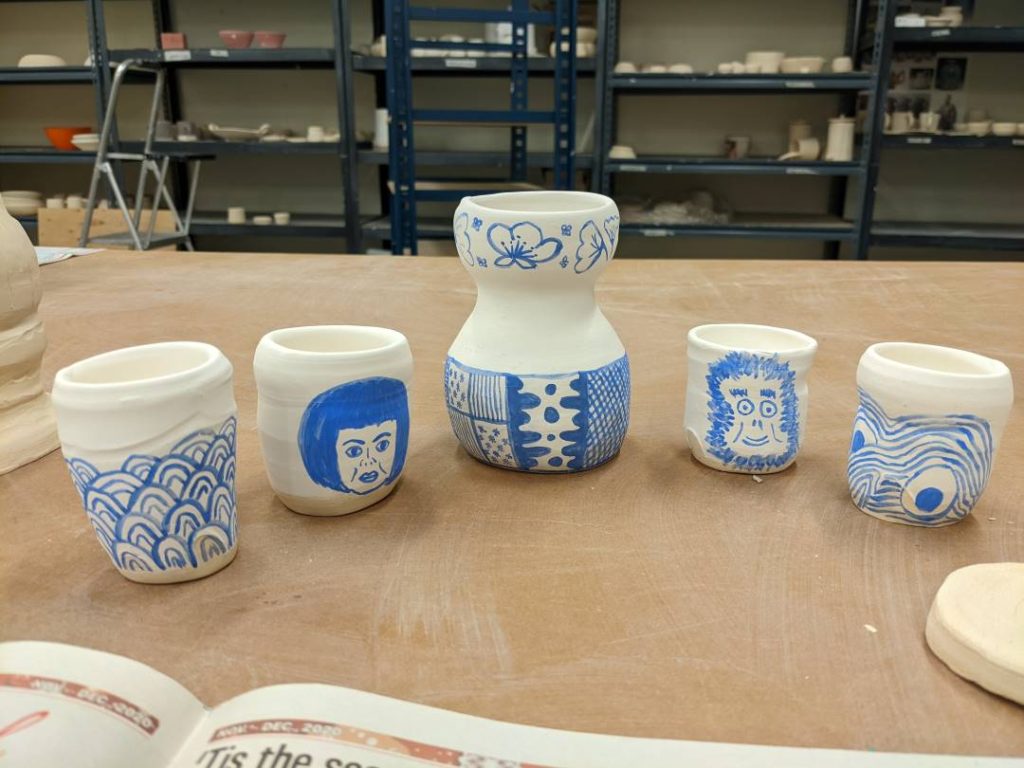
From L – Japanese waves, Yayoi Kusama, Carafe with sakura blossoms and ginko leaves with patterns inspired by Yayoi Kusama, a monkey, and ramen noodles with eggs.
Overall, my throwing skills need a lot of improvement and sadly, I think that can only be fixed by time on the wheel. Hence, my “what’s next” pottery crossroads. I am happy I took on this challenging project and I have a fondness for it, despite it’s flaws. As Lynda Barry says, your art exists whether you or someone else likes it or not.
Kanpai 乾杯!



Leave a Reply